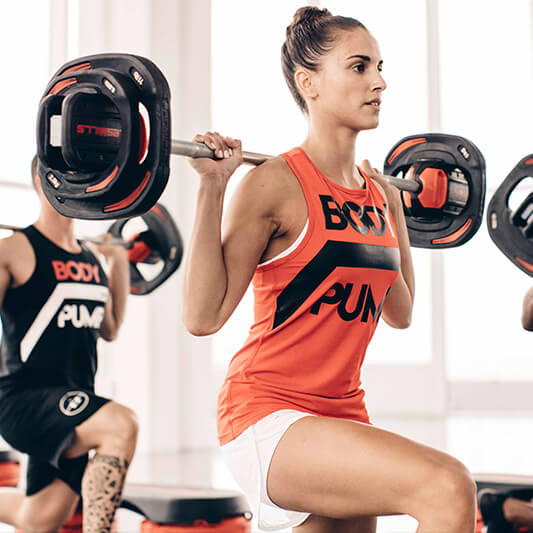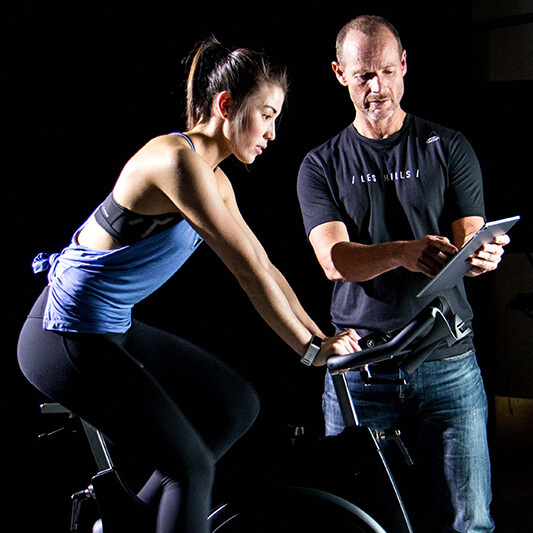In this era of activity tracking, when we have instant workout data at our fingertips, it’s very tempting to judge our activity based on how many calories we’ve expended. Have we burned enough to justify that post-workout latte or glass of wine this evening?
But while balancing calories-in versus calories-out plays an important role in maintaining a healthy weight, it isn’t the only factor. Vital research from the Les Mills Lab proves it.
The New Zealand study – published in the Journal of Science and Medicine in Sport – showed that certain types of exercise can trigger far greater fat-burning and other healthy responses in the body than simple calorie counting suggests.
The results fundamentally challenge the way we think about calories, demonstrating that different workouts have different effects on the hormonal and physiological changes that take place in people’s bodies, even if they burn the same number of calories.
Conducted by Associate Professor Nigel Harris of Auckland University of Technology, the study aimed to identify the underlying causes of clear differences (shown in an earlier study) in body fat reductions resulting from resistance training compared to more intense cardiovascular workouts.

By comparing the levels of Human Growth Hormone (HGH) present in subjects after they had completed resistance training and cardio cycling workouts, it was shown that HGH was 56 per cent higher after resistance training.
“Human Growth Hormone oxidises fat and builds lean muscle tissue,” explains Bryce Hastings, Les Mills Head of Research. “That’s important for ongoing calorie expenditure because muscle burns more calories than fat. The more muscle you can build, the more calories your body will burn long-term. Combine that with increased fat loss and the result leads to rapid changes in body composition.”
Similarly, blood lactate levels were up to 81 per cent higher after resistance training sessions compared to cycling sessions. Lactate levels build when the muscles work hard, and it is the accumulation of lactate from exercise that sparks the previously mentioned growth hormone response.
The results also have implications for the exercisers relying on simple measurements of calorie output during workouts or training sessions, according to Dr Harris.
“Calories matter,” Harris says, “but so does the effect of an exercise session on hormonal and physiological responses, which are known to have positive, long-term effects on body composition. A wearable device that only measures heart rate and calorie count may, therefore, be too limited a tool to get adequate understanding of the other, arguably more important, adaptations taking place in our bodies when we exercise.”
In short, the beneficial effects of certain exercise types – such as resistance and high-intensity interval training – can last long into the recovery period, well after the actual workout is over.
Overall, says Hastings, the new study points to how much more people need to know about the effects of certain exercise types. “It’s complex, he says, “and just counting calories misses a big part of the jigsaw. We now know that.”
HOW THE STUDY WORKED
If you burn 300 calories doing cardiovascular exercise – steadily pedalling on a bike, for example – is that the same as burning 300 calories doing resistance training? This is the question exercise scientist Nigel Harris, of Auckland University of Technology, and a team of researchers set out to answer.
To investigate, they set up a study to compare a weights-based resistance training workout to a steady-state cardio session on a bike. Specifically, they were interested to see how study participants’ physiological and hormonal responses to the two different workouts would compare, even when the calories burned and duration of the workouts were exactly the same.

The study focused on 13 healthy females and the weights program used was a 55-minute BODYPUMP® workout. First of all, participants did a BODYPUMP session. They measured the calories they burned during that class and set the intensity levels for the cycling session accordingly, to make sure calorie expenditure was exactly the same in both workouts.
So, for example, if a participant had burned 350 calories in the original 55-minute BODYPUMP class, their cycling session was programmed to ensure they cycled for 55 minutes and burned 350 calories in this workout too.
To measure their hormonal response to the two workouts blood was taken from the participants before and after both workouts.
The results were striking.
Human growth hormone: long-term calorie burn
The first hormone measured was Human Growth Hormone (HGH), which oxidises fat and builds lean muscle tissue. That’s important for ongoing calorie expenditure, because muscle burns more calories than fat; the more muscle you can build, the more calories your body will burn long term.
Both workouts boosted levels of HGH, but HGH was an impressive 56 per cent higher after the weight training than after steady-state cycling; BODYPUMP had a far greater impact on the body’s metabolism and long-term calorie burn.
IL-6: changing body composition
The study also measured levels of interleukin 6 – a chemical that’s released by your muscles when you exercise. Interleukin 6, or IL-6, plays an important role in the body’s inflammatory response to exercise and is known to induce fat oxidation, which suggests it’s a significant factor in exercise-related changes in body composition.
IL-6 was a statistically significant 3 per cent higher after BODYPUMP than after the cycling session.
Blood lactate: the catalyst for change
Finally, the study looked at blood lactate. Lactate levels build when our muscles work hard, and it’s the accumulation of lactate from exercise that sparks the growth hormone response we mentioned earlier. In fact, research suggests that exercising at an intensity above the lactate threshold, and for a minimum of 10 minutes within a workout, is the greatest stimulus there is to the secretion of HGH.
Lactate was 81 per cent higher after BODYPUMP than after cycling.
Focus on the long-term benefits
On all counts then, our body has a far greater long-term response to certain types of weight training, specifically the high repetition training of BODYPUMP, than it does to a calorie-matched cardio class. And that’s really important, because when you exercise, you want to make lasting changes to your body – it’s what makes all the effort worthwhile.
So, when you’re deciding what exercise to do, remember: it isn’t just about the calories burned during the workout itself. It’s important to also consider the longer-term physiological benefits.
When compared to a more intense cardiovascular session, a workout such as BODYPUMP might have a lower calorie burn during the 55 minutes of the class itself. However, as this study shows, its impact on metabolism and body composition is both significant and ongoing.
WHAT DOES THIS MEAN FOR YOU?
Basically, when you’re deciding what exercise to do, remember: it isn’t just about the calories burned during the workout itself. It’s important to also consider the longer-term physiological benefits. When compared to a more intense cardiovascular session, a workout such as BODYPUMP might have a lower calorie burn during the 55 minutes of the class itself. However, as this study shows, its impact on metabolism and body composition is both significant and ongoing.
Find a BODYPUMP workout near you, or work out at home using LES MILLS On Demand.

